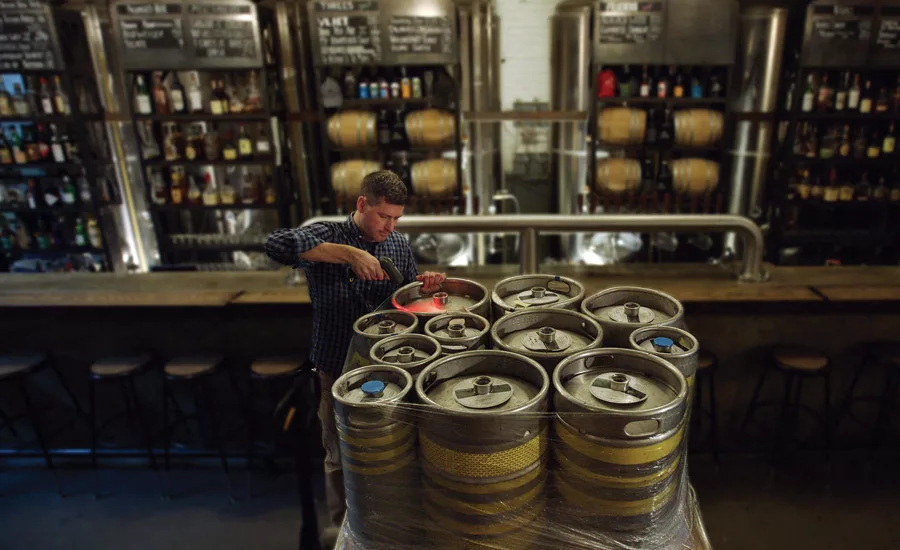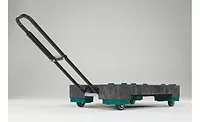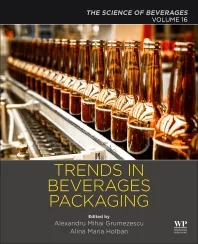Reusable packaging systems maximize efficiency, traceability
Brands benefits from RFID tracking

More than 258 tons of municipal solid waste (MSW) was produced in 2014, and the United States generated a 35 percent recycling rate with 89 million tons of MSW recycled or composted — an increase of 31 million tons during the past 20 years, according to the Stamford, Conn.-based nonprofit Keep America Beautiful. The continued push to reuse materials and reduce packaging waste also is proliferating throughout the beverage supply chain.
“There is a growing demand to reduce packaging waste,” says Nigel Pritchard, group chief executive officer at London-based Petainer Holdings. “This is prompting wide-ranging discussions about how to improve consumer recycling, increase the use of post-consumer recyclate as well as alternative systems such as refillable bottles. The refillable market is particularly strong in Germany, thanks to both social and cultural norms, as well as the government’s support. Other countries also use refillable bottles, so this is a model which could be adopted elsewhere in the world.”
He adds that the company’s new product development team continuously is exploring tangible ways to use higher percentages of post-consumer recyclate (PCR) in its products. “The one-way bottle can use up to 50 percent recycled material and possibly even 100 percent; however, the availability of good-quality recycled resin in Central and Eastern Europe and the technical requirements of the container are currently the limiting factors,” he explains. “We have also completed a development project using one-way recyclate in refillable bottles and have succeeded in using 30 percent PCR with no loss of performance and are now selling this commercially.
“We are also committed to exploring new technologies around alternative plastic materials and cradle-to-cradle innovations, with a view to making it even more sustainable,” he continues.
The increase in automation within beverage warehouses along with SKU proliferation, a decline in carbonated soft drinks consumption and consumers looking for healthier options are among the factors impacting the reusable/returnable container market, industry suppliers note.
Justin Hermsen, senior product manager for ORBIS Corp., Oconomowoc, Wis., notes that the uptick in automation and the need for high speeds and tight tolerances are affecting the reusable container market. “The increase in automation is impacting the reusable market because of the tolerances required for efficiency in automated production lines,” he explains. “These systems work best with standardized packaging, and reusable offerings are dimensionally consistent and reduce costly downtimes associated with out-of-spec packaging.”
However, size variations in wood or corrugated packaging, for example, can increase challenges for automated lines running at high speeds and tight tolerances, Hermsen notes. “System failures and disruptions can be more common with one-way or disposable packaging due to their inconsistent structure,” he adds.
A holistic approach
Reusable packaging systems also can produce positive results for a company’s bottom line and the environment. Yet, experts note that beverage manufacturers and wholesalers should carefully evaluate how reusable packaging can improve their return on investment and explore ways to add visibility to these packaging assets.
“Companies looking to incorporate reusable packaging systems are interested in taking a holistic approach. They want to evolve their supply chains the right way by implementing packaging that is trackable,” Hermsen says.
To accomplish this goal, many beverage manufacturers and wholesalers are implementing radio-frequency identification (RFID) tracking within their shipments to determine product location, says Kat LaRocca, national sales director for beverage at Los Angeles-based Rehrig Pacific Co.
“Rehrig’s reusable packaging solutions can include RFID and technology packages to enhance the traceability of a beverage company’s products and internal assets,” LaRocca says. “… Our technology services team is focused on providing our clients with solutions to help track and trace every step of their supply chain that our plastic shells or containers touch. A Rehrig reusable shell or pallet can be tracked from production to the store level for complete visibility into the supply chain.”
Benefits of the company’s reusable plastic beverage crates for direct-store delivery include lower total cost of ownership and cost for each case compared with a one-way solution; reduced time to merchandise products in-store, increasing driver productivity and reducing delivery costs; and consistency in design and specifications, which increases productivity and efficiency on bottling lines and automation, LaRocca says.
The brewing industry also is reaping the benefits from the reusable container market through its ability to track the freshness of beer within steel kegs, particularly as larger brewers invest in new locations or acquire other breweries to extend their geographic footprint and minimize transportation speed, says Scott Moorad, senior vice president of business development and strategy for Satellite Logistics Group (SLG), Houston.
“This is a benefit to all in that beverage products travel shorter distances and drives a higher-quality, fresher product to the consumer,” Moorad says. “We are seeing a strong brewer preference for reusable steel kegs. We’ve actually been asked if we can start collecting ‘recyclable’ containers at [the] distributors since they ‘do not want to deal with them;’ thus adding reverse logistics costs and proper disposal to ‘one-way’ products.”
The desire to track steel kegs continues to proliferate in the market, particularly as new tracking solutions have been popping up during the past few years, he adds.
“Brewers are beginning to realize the supply chain benefits of asset tracking and visibility,” Moorad explains. “Knowing where a keg is located, what product is in it and how long ago it was filled enables a brewer to have far more visibility and control over the quality and freshness of their product, which, in turn, makes for a better experience for the consumer.”
ORBIS’ Hermsen also touts the efficiencies that can be achieved with reusable packaging systems and the importance of tracking assets. “ORBIS understands that each application is different and tracking requirements can vary. We work with companies to determine their asset tracking goals, including product loss reduction, product damage minimization and system efficiency improvements,” he says. “Companies have many options, all with different cost, resource and technological impacts. They can choose between barcodes, [quick response] (QR) codes, RFID, wireless and GPS technologies.”
Sustainable solutions
In addition to advancements in traceability measures, sustainability and recyclability will remain key trends in the returnable containers market and methods for delivering consumer packaged goods, industry suppliers note.
“The passion for being good stewards of our environment runs deep in the craft brewing community. Sustainability has driven more efficiency in transport (full truck loads, decreased mileage traveled) and heightened the expectation for carriers to be SmartWay certified,” SLG’s Moorad says. “Stainless steel kegs have an average life cycle of 30 years and [are] 100 percent recyclable. Therefore, stainless returnable containers have far less impact on the environment.
“Within 10 years, it’s more likely than not that all kegs will be tracked at the asset level,” he continues. “There’s too much at stake in both efficiency, cost and accountability not to.”
Another viable way to remove waste from the system and reduce carbon emissions is by utilizing refillable PET bottles and containers, Petainer’s Pritchard says.
“Typically, a refillable bottle does 15 to 25 trips in a lifetime, removing a great deal of waste from the system and making it the more sustainable packaging system,” Pritchard explains. “Taking a holistic view, both one-way and refillable packaging are a sustainable form of packaging, which will be even more so with a strong returnable system to ensure both a re-use and/or a high-quality stream of recycled material.
“At the end of the day, the future of returnable packaging systems like refillables will depend very much on consumer attitudes and demand and whether they offer the best economically sustainable solution for brand owners,” he continues. “Drinks manufacturers will have to ensure there is an infrastructure [that] supports returnable containers in their market such as collection points for returned bottles and a suitable deposit scheme to incentivize returns like the German model.”
When it comes to transporting products, Rehrig Pacific’s LaRocca notes that the company’s shells and pallets are 100 percent recyclable and have a lightweight design that contributes to improved fuel efficiency and lower operating costs.
“A third-party study showed reusable beverage crates produced 89 percent less solid waste than pad/shrink … and also required 46 percent less energy than pad/shrink,” she says.
In addition to their sustainable nature, returnable containers also can be technologically enhanced with RFID track-and-trace capabilities and near-field communication (NFC) tags, which help with marketing and brand enhancement, LaRocca adds. “We have helped our clients track and return plastic pallets to their system through GPS. Reusable beverage shells can also be enabled with NFC tags to communicate with customers at the retail level,” she says. “Rehrig crates are often used to display and merchandize products. These crates can include an NFC tag that allows customers to bump their cell phones to the crate, providing beverage companies with direct communication and insight into their customers.”
ORBIS’ Hermsen also highlights the fact that other tracking options also are available. “Technology advancements give the supply chain industry more access to information about [a] product other than its location,” he explains. “Companies now have the potential to track a package’s temperature to ensure product quality, light exposure to see if sealed packaging has been exposed and shock sensors to measure possible mishandling. We truly have a holistic view into the daily life of a package.
“The beverage industry can benefit from reusable packaging systems now, and in the future, to best optimize truck space and move freight [in] the most efficient way possible,” he continues. “Pairing reusable packaging with a truck’s footprint will help fill trucks to their capacity, predict load sizes and save on transportation costs. But to truly benefit from reusable packaging, it is best to bring in an expert who can evaluate a company’s entire business and offer a complete reusable packaging solution to improve profitability.” BI
Looking for a reprint of this article?
From high-res PDFs to custom plaques, order your copy today!






